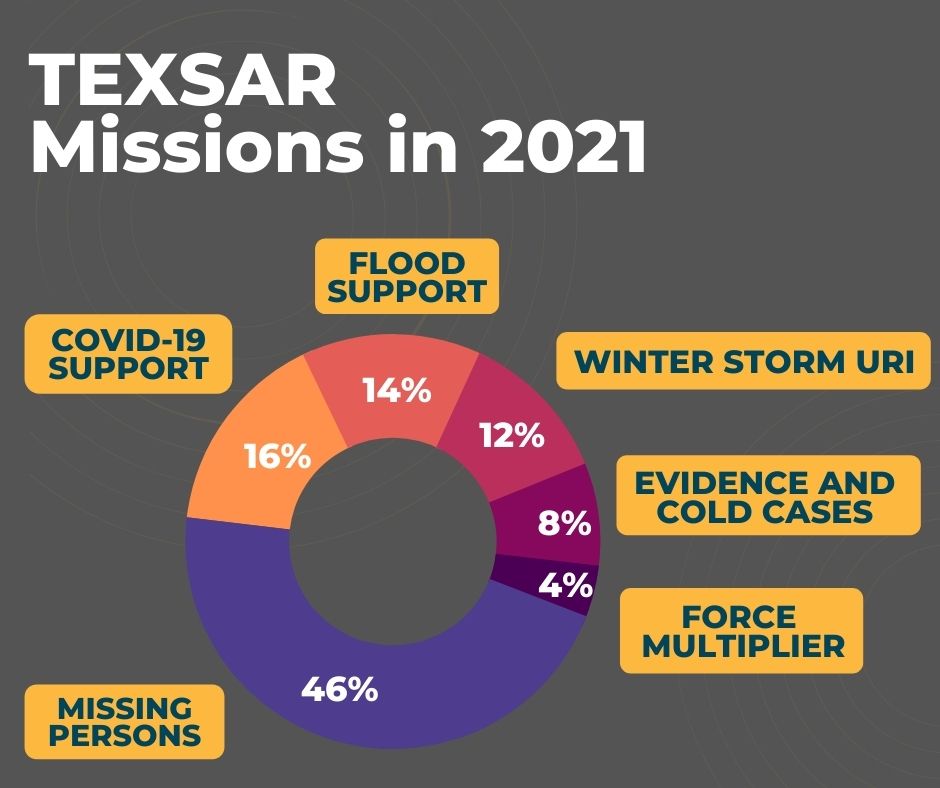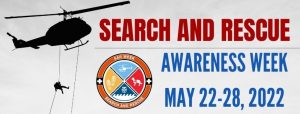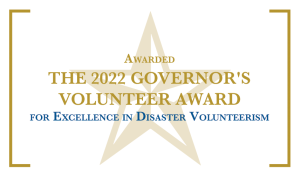When are SAR Teams are Called Upon
The response to an incident involving people who are lost, missing, or endangered frequently involves a search and rescue (or SAR) mission. Incidents such as these are frequently (but not always) related to recreational outings, criminal activity, medical issues, or disasters. Let’s take a look at a few different situation types that may call for a SAR mission!
One classic example of a scenario that warrants a search and rescue operation is someone who becomes lost or endangered while engaging in recreational activities. You’ve likely seen stories about missing hikers, boaters, or hunters in the news. One notable example is the rescue of Cathy Frye, a hiker who was rescued after being lost in Big Bend State Park for 5 days. These searches are usually initiated after family members or friends report that the subject has not returned home or made contact by the expected conclusion of the trip.

It’s always a good idea to give an itinerary to a few contacts before you go on a trip! Olympic Mountain Rescue put together a Backcountry Itinerary Form that you can easily fill out and distribute. It includes fields such as trip dates, locations, method of transportation, personal identification information, and much more. Taking 10 minutes to document your trip details can potentially improve your chances of being located by a search and rescue team drastically.
When someone has gone missing and foul play is suspected, information pertaining to the missing persons case becomes more sensitive and special investigators will play a large role in overseeing the case. While locating the victim is the highest priority, search and rescue missions can also be useful in evidence discovery. Search technicians must take care to preserve evidence while attempting to locate the victim as quickly as possible.
It’s important that criminal cases are identified as such early on because searchers will need to take additional factors into consideration. These factors may be related to the perpetrator’s motives, capabilities, and tools, or they may be related to the victim’s response. You wouldn’t expect to find the body of a lost hiker to be buried beneath the ground, but this may very well be the case if you were searching for a murder victim. Searchers may also be on the look for weapons or signs that an altercation took place.
Effects of medical conditions can also cause victims to go missing or enter situations from which they need to be rescued. Severe physical health conditions, such as a broken leg or heart attack, can render someone incapable of evacuating themselves to safety. Certain mental health conditions can increase the chances that an individual goes missing. For example, autistic children frequently gravitate towards bodies of water. Individuals with psychotic disorders frequently adopt evasive behavioral patterns and are less likely to be found on trails or roads. Those with dementia have a tendency to wander off, and once located are often found within 1.5 miles of their last known point.
If SAR technicians are able to identify the specific type of mental illness, they can use their knowledge of lost person behavior to guess at certain tendencies the subject may have. These expected behavioral patterns can be factored into search planning efforts. Robert J. Koester’s book Lost Person Behavior offers extensive reference material on what rescuers may want to look for depending on search factors, including various medical conditions.
Disaster SAR operations often occur on a large scale because disasters impact entire communities. One way we can classify disasters is based on whether they are natural or man-made. Natural disasters primarily consist of extreme weather events such as hurricanes, tornadoes, floods, wildfires, landslides, winter storms, and many more. Man-made disasters involve hazardous materials, fires, transportation incidents, structural failures, terrorism, and more.Texans have faced a number of historic hurricanes. One of the most recent examples of a disaster requiring extensive search and rescue operations is Hurricane Harvey in August of 2017. Somewhere between 1,500 to 2,000 water rescues happened in the wake of this devastating storm. Flood and swiftwater rescue is a vital capability for SAR teams in states such as Texas where floods are regular deadly occurrences. You can also read more about TEXSAR’s response to Hurricane Harvey in this article.
Depending on whether the incident emerged from a recreational outing, a criminal case, physical or mental conditions, or a disaster, the search and rescue operation can vary drastically. Information about the situation that led to the missing persons case is used in conjunction with personal details to guess at a subject’s expected behavior. Studying the field of lost person behavior can enhance predictions based on data from previously documented searches. This information is also used to determine both search techniques and capabilities (such as ground search and rescue, flood and swiftwater rescue, aerial search etc.) to deploy.
Written by: TEXSAR Member
TEXSAR is a 501(c)(3) non-profit that relies strictly on private donors and public supporters. TEXSAR services are always free to requesting agencies. You can contribute to TEXSAR by donating today!




